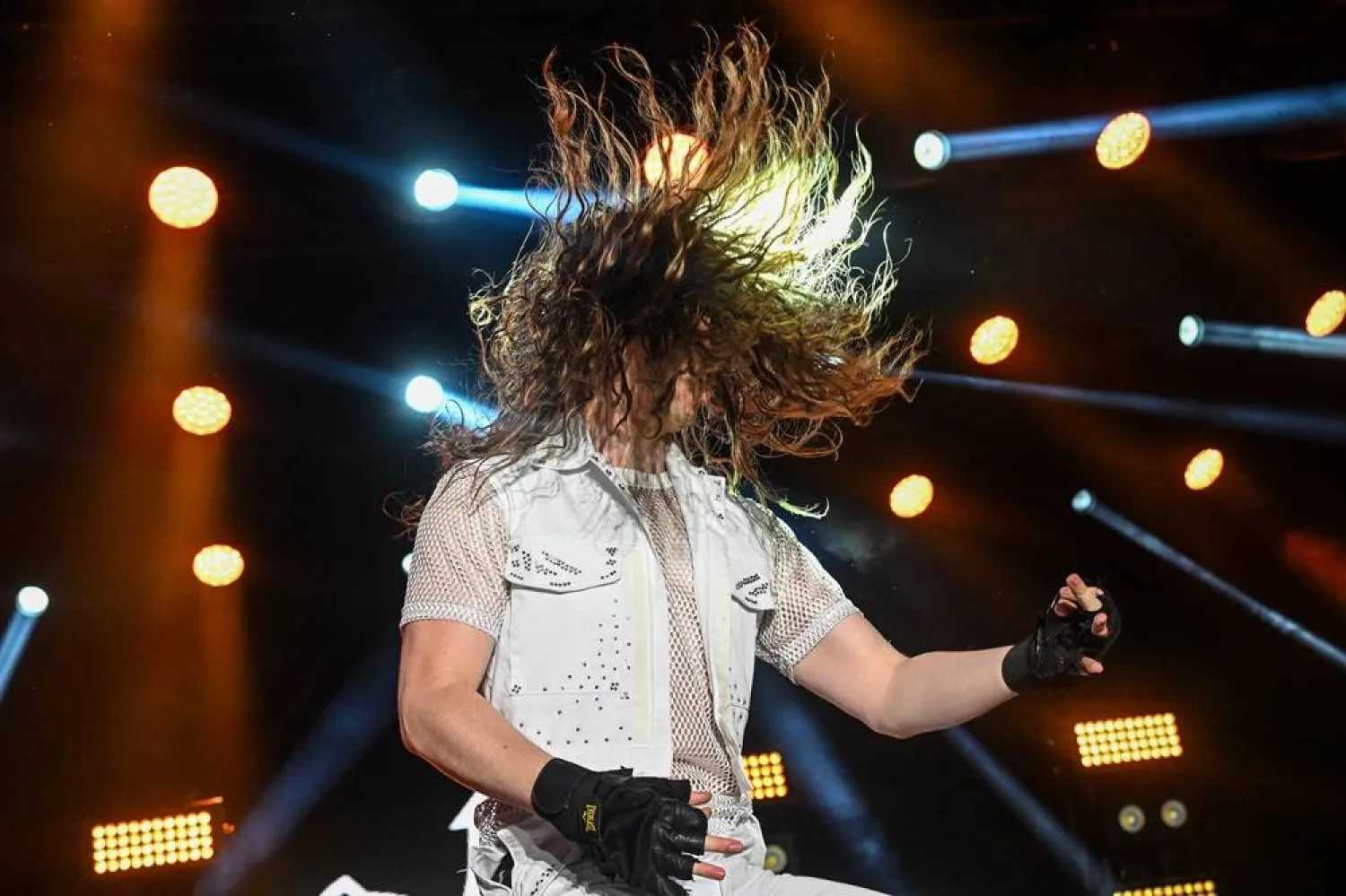They’re the most fervent musicians no one has ever heard.
Performers at this year's Air Guitar World Championships in Finland tuned up Friday at the Olympics of air guitar for the 27th time, featuring dedicated competitors like "Shred Lasso” and “Guitarantula.”
This year's challenge began Wednesday with Airientation in Oulu, a city nearly 540 kilometers (335 miles) north of Helsinki, and was headlined by a class open to veterans and new guitarists alike. The Dark Horses Qualifications followed on Thursday, culminating with the World Championships Final on Friday night with the crowning of Canada's Zachary “Ichabod Fame” Knowles as the 2024 Air Guitar World Champion.
It was a tough competition with former 2023 World Champion Nanami “Seven Seas” Nagura of Japan and 2022 winner Kirill “Guitarantula” Blumenkrants of France in second and third place respectively.
Contestants are judged on the performance of two songs in two separate rounds, each lasting 60 seconds. While passion is a must, a real pick or even a finger-picking style is optional. Props and costumes are allowed — but backup bands and real instruments are forbidden.
This year’s audience favorite was Mathilde “Clitoriff” Dollat from France with an intense show made all the more dramatic by the heavy rain that drenched the performer and audience alike.
Nanami “Seven Seas” Nagura of Japan last year took home the title — her third, making her the winningest air guitarist in a competition that dates back to 1996. She's seeking a four-peat against nine dark horses as well as the national champions from the United States, Belgium, Canada, Germany, Ireland, Finland and France.
The jury had to consider a contestant's “originality, ability to be taken over by the music, stage presence, technical merit, artistic impression and airness” in deciding to award points on a 4.0 to 6.0 scale, according to the competition’s online rulebook. The contestant with the highest total cumulative score won.
“Air guitar playing is not instrumental sports or arts, nor does it require any special venues or skills, so it is accessible to all,” according to the championships' website. “Air guitar can be grasped regardless of gender, age, ethnic background, and social status. Air guitar playing is equal.”
And don't fret — regardless of the winner, no one's air guitar gently weeps here. The contest organizers aim to promote world peace with their slogan, “MAKE AIR, NOT WAR.”
“According to the ideology of the competition, wars would end, climate change stop and all bad things disappear, if all the people in the world played the Air Guitar," according to their website. “This is why the whole universe is invited to play the Air Guitar for world peace at the end of the competition.”
So pick up your air guitar and play.









